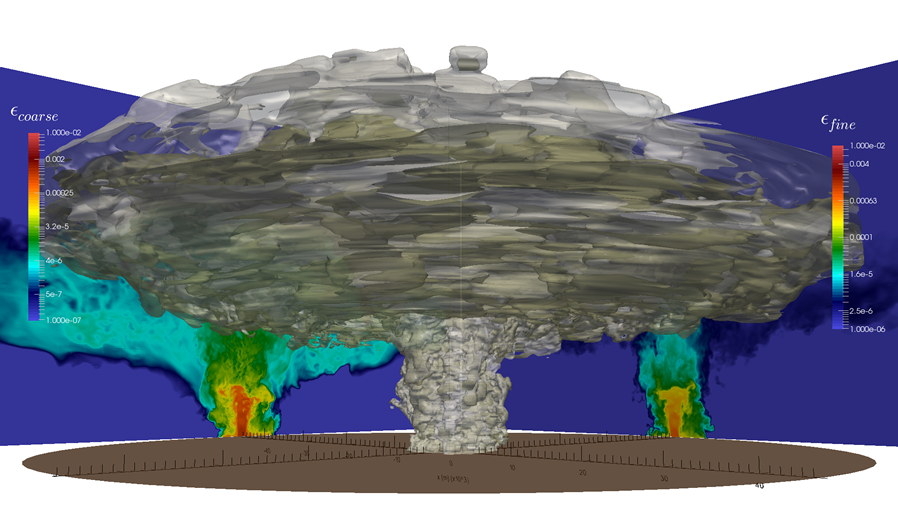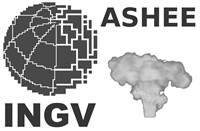ASHEE-1.0: a compressible, equilibrium–Eulerian model for volcanic ash plumes
Cerminara, M., T. Esposti Ongaro and L. C. Berselli. ASHEE-1.0: a compressible, equilibrium–Eulerian model for volcanic ash plumes, Geoscientific Model Development, 9, 697-730, doi:10.5194/gmd-9-697-2016, 2016.
Abstract:
A new fluid-dynamic model is developed to numerically simulate the non-equilibrium dynamics of polydisperse gas–particle mixtures forming volcanic plumes. Starting from the three-dimensional N-phase Eulerian transport equations for a mixture of gases and solid dispersed particles, we adopt an asymptotic expansion strategy to derive a compressible version of the first-order non-equilibrium model, valid for low-concentration regimes (particle volume fraction less than 10−3) and particle Stokes number (St – i.e., the ratio between relaxation time and flow characteristic time) not exceeding about 0.2. The new model, which is called ASHEE (ASH Equilibrium Eulerian), is significantly faster than the N-phase Eulerian model while retaining the capability to describe gas–particle non-equilibrium effects. Direct Numerical Simulation accurately reproduces the dynamics of isotropic, compressible turbulence in subsonic regimes. For gas–particle mixtures, it describes the main features of density fluctuations and the preferential concentration and clustering of particles by turbulence, thus verifying the model reliability and suitability for the numerical simulation of high-Reynolds number and high-temperature regimes in the presence of a dispersed phase. On the other hand, Large-Eddy Numerical Simulations of forced plumes are able to reproduce the averaged and instantaneous flow properties. In particular, the self-similar Gaussian radial profile and the development of large-scale coherent structures are reproduced, including the rate of turbulent mixing and entrainment of atmospheric air. Application to the Large-Eddy Simulation of the injection of the eruptive mixture in a stratified atmosphere describes some of the important features of turbulent volcanic plumes, including air entrainment, buoyancy reversal and maximum plume height. For very fine particles (St → 0, when non-equilibrium effects are negligible) the model reduces to the so-called dusty-gas model. However, coarse particles partially decouple from the gas phase within eddies (thus modifying the turbulent structure) and preferentially concentrate at the eddy periphery, eventually being lost from the plume margins due to the concurrent effect of gravity. By these mechanisms, gas–particle non-equilibrium processes are able to influence the large-scale behavior of volcanic plumes.




Devi effettuare l'accesso per postare un commento.